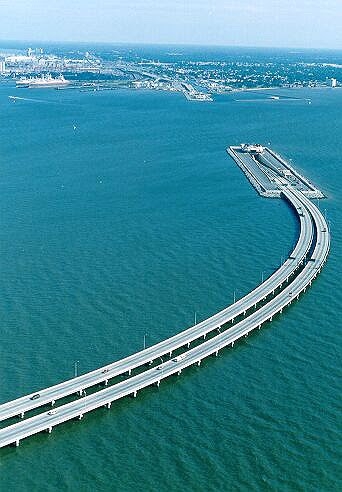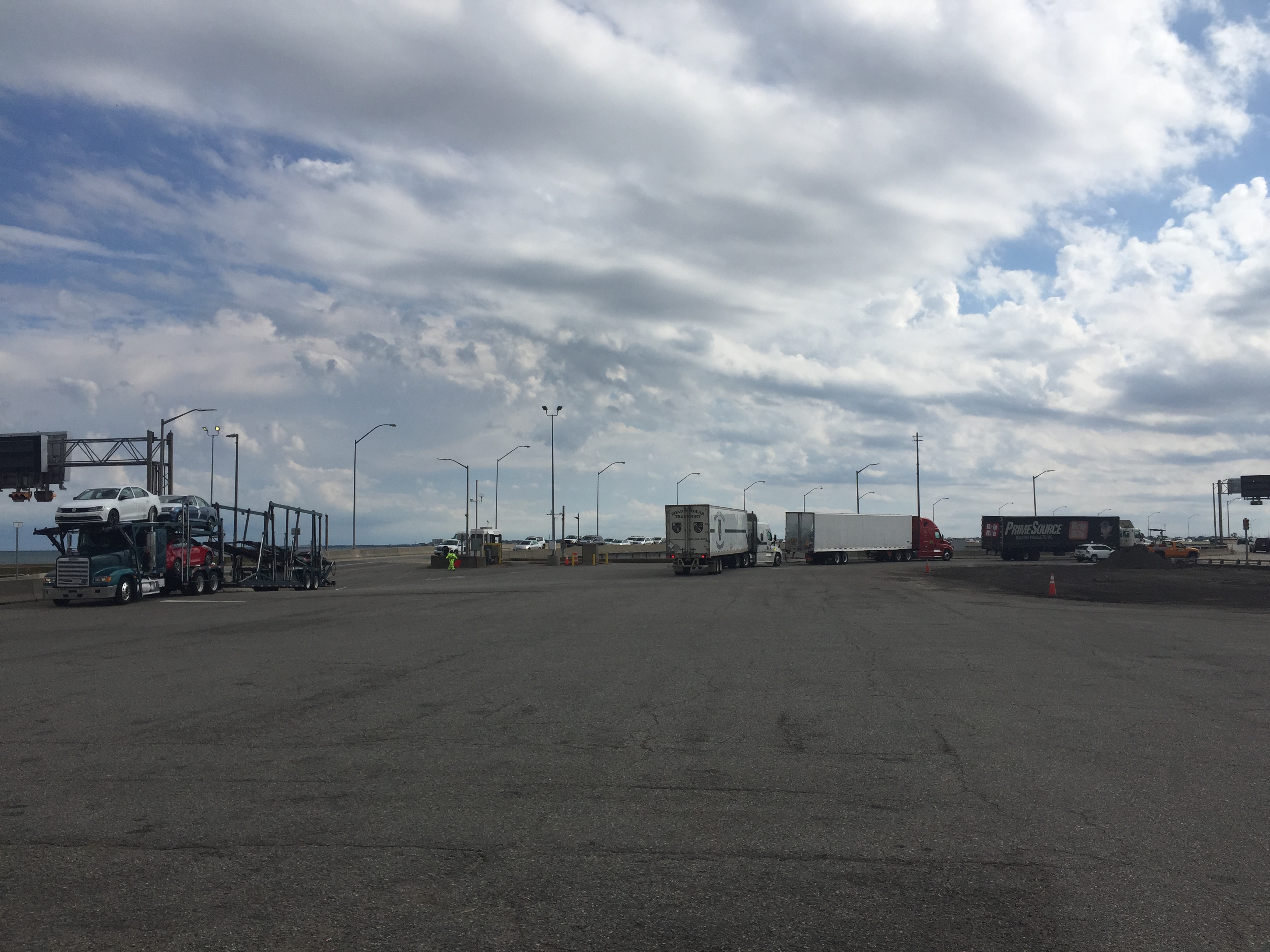Grant to Fund Study of Overheight Truck Violations at the Hampton Roads Bridge Tunnel
December 01, 2017

 Semitrailers at the Hampton Roads Bridge Tunnel
Semitrailers at the Hampton Roads Bridge Tunnel
The Hampton Roads Bridge-Tunnel (HRBT) serves as a critical transportation link for economic activity in Hampton Roads, but it is also a source of significant recurring congestion.
The bridge-tunnel carries almost 100,000 vehicles on a typical weekday. Large semitrailers are a fraction of this volume - at about 2 percent - but they pose a major challenge to daily operations.
The HRBT capacity is significantly less than the typical capacity of a two-lane freeway segment due to several geometric restrictions like narrowing of the roadway at the tunnel entrance, horizontal and vertical curves, and variation in driver behavior while traveling through the tunnels. In addition, incidents cause disruptions to the traffic flow, further exacerbating the conditions at the already congested corridor.
In particular, over-height (OH) trucks cause frequent stoppage of the traffic since the tunnel clearance in the older westbound (WB) direction is lower than the newer eastbound tube, 13' 6" compared to 14' 6" in the eastbound direction. In order to turnaround an OH truck at the tunnel islands, traffic in both directions is interrupted or stopped.
To address the issue, a $140,000 VDOT grant will fund an evaluation of the effectiveness of various mitigation strategies by a team of Old Dominion University researchers led by Mecit Cetin, associate professor of civil and environmental engineering.
The Virginia Department of Transportation (VDOT) is in the process of installing an additional OH detection sensor and new alert signs before the WB inspection station. This installation is expected to be completed by November 30, 2017. Research is needed to evaluate the impacts of this new system. Research is also needed to fully understand and document the reasons behind the violations, and potential short-term and long-term strategies to minimize truck turnarounds at the islands and evaluate their applicability to the HRBT corridor.
This proposed research will result in a final report documenting:
- important characteristics of the violators (e.g., by trucking companies) and trends in violation rates based on the archived data;
- the benefits and impacts of the new OH vehicle detection system to be installed at the HRBT corridor; and
- the major reasons behind OH violations and characteristics of frequent violators before and after installation of the OH system.
"In this VDOT project, we are going to investigate how these overheight violations could be reduced or ideally eliminated," said the project's lead investigator Mecit Cetin. "We are going to evaluate the effectiveness of new and larger warning signs, and survey truck drivers to better understand why they proceed through the corridor despite the warning signs in the upstream."
Cetin said the team recently installed a LIDAR system to measure the actual heights of trucks travelling in the WB direction. This system provides a rich dataset to better understand the height profiles of all trucks, especially those that trigger the overheight sensors. We are hoping that the project will results in actionable recommendations to reduce overheight violations.
"This will ultimately improve the travel time reliability through the HRBT corridor for everyone.," Cetin said.

